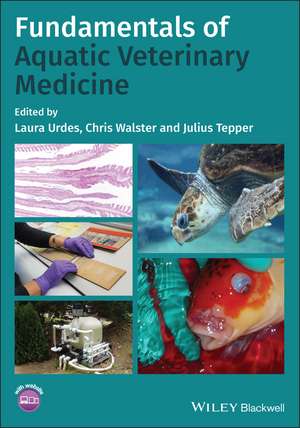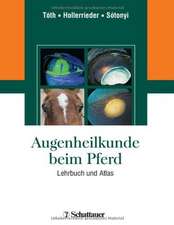Cuprins
Preface xv
List of Contributors xvii
Acknowledgement xix
About the Companion Website xxi
1 Aquatic Environment and Life Support Systems 1
Sherry Kasper, Olanike K. Adeyemo, Trista Becker, David Scarfe, and Julius Tepper
1.1 Introduction 1
1.2 The Life-Support System in Aquaculture and Ornamental Fish Care 2
1.2.1 Extensive Culture System 3
1.2.1.1 Ponds 3
1.2.1.2 Tanks 3
1.2.2 Semi-Intensive Culture System 3
1.2.3 Intensive Culture System 4
1.3 Physical Features of Life-Support Systems 4
1.3.1 Mechanical, Chemical and Other Types of Filtration 4
1.3.1.1 Ultrasonic Cavitation 5
1.3.1.2 Ultraviolet Filtration 5
1.3.1.3 Ozone Filtration 6
1.3.1.4 Biological Filtration 6
1.3.2 Aquasystem Water 7
1.3.2.1 Abiotic (Chemical and Physical) Properties 7
1.3.2.2 Temperature 7
1.3.2.3 pH 7
1.3.2.4 Dissolved Oxygen 8
1.3.2.5 Carbon Dioxide 8
1.3.2.6 Nitrogen 9
1.3.2.7 Hydrogen Sulfide 9
1.3.2.8 Chlorine 9
1.3.2.9 Alkalinity 9
1.3.2.10 Hardness 10
1.3.2.11 Conductivity, Salinity, Total Dissolved Solids 10
1.3.2.12 Light, Color, Vibration and Noise 11
1.3.2.13 Greenhouse Gasses and Climate Change 11
1.3.2.14 Ammonia, Nitrite and Nitrate 13
1.3.2.15 The Nitrogen Cycle 13
1.3.2.16 Interaction of Chemical and Physical Properties of Water that Affect Aquatic Animal Health 14
1.3.3 Biotic Factors of Water 15
1.3.3.1 Biological Oxygen Demand 15
1.3.3.2 Plants and Algae 15
1.3.3.3 Algal Bloom 16
1.3.3.4 Larger Aquatic Plants 16
1.3.3.5 Pests and Predators 16
1.4 Monitoring and Regulation of Life-Support Systems 17
1.5 Maintaining Optimal Conditions 19
1.5.1 Biofilms 21
1.5.2 Chemical Flocculation and Bioflocculation 21
1.5.2.1 Effect of Therapeutants and Disinfectants on Biofilters 22
1.5.3 Environmental Toxins and Pollutants 22
1.5.3.1 Heavy Metals 22
1.5.3.2 Insecticides 23
1.5.3.3 Herbicides 24
1.5.3.4 Harmful Algal Blooms 25
1.6 Diseases Associated with Suboptimal Water Quality 26
References 27
2 Taxonomy, Anatomy, and Physiology 30
Matt Longshaw, Acacia Alcivar-Warren, Wes Baumgartner, Trista Becker, James E. Bogan, Jr.,
Erdem Danyer, Sherry Kasper, Nicole Marie Nemeth, and Adolf Maas
2.1 Introduction 30
2.2 Invertebrates 31
2.2.1 Crustacea 31
2.2.1.1 Superfamily Penaeidae 31
2.3 Vertebrates 32
2.3.1 Fish and Elasmobranchs 32
2.3.1.1 Agnatha 32
2.3.1.2 Chondrichthyes 33
2.3.1.3 Osteichthyes (Teleost) 33
2.3.2 Amphibians 46
2.3.2.1 Classification of Amphibians 46
2.3.3 Reptiles 46
2.3.3.1 Classification of Reptiles 46
2.3.4 Aquatic Avian Species (Class Aves) 47
2.3.5 Aquatic Mammals (Class Mammalia) 47
2.3.5.1 Cetacea 48
2.3.5.2 Order Sirenia 48
2.3.5.3 Order Carnivora - Pinnipedia Group 48
References 49
3 Husbandry and Industries 50
Trista Becker, Olanike K. Adeyemo, Erdem Danyer, and Nicholas Saint-Erne
3.1 Introduction to chapter 50
3.2 Husbandry and Industry 50
3.2.1 Culture Environment 50
3.2.2 Types of Aquaculture Systems 51
3.2.2.1 Extensive Culture System 51
3.2.2.2 Semi-Intensive Culture System 51
3.2.2.3 Intensive Culture System 52
3.2.3 Management of Culture Environment 55
3.2.3.1 Selection of Stocking Materials and Population Regulation 55
3.2.3.2 Proper Feeding 55
3.2.3.3 Reduction of Handling Stress 55
3.2.4 Natural History and Aquaculture 56
3.2.5 Environmental and Social Acclimation 56
3.2.6 Animal Transport 56
3.2.7 Ornamental Fish Culture 58
3.3 Nutrition 64
3.3.1 Feeds and Feeding 64
3.3.2 Feed Storage 65
3.3.3 Nutrient Analysis 66
3.3.4 Nutrient Requirements 66
3.3.5 Nutritional Deficiencies and Toxicities 66
3.3.6 Water 70
3.3.7 Therapeutic Diets 70
3.3.7.1 Principles and Techniques of Therapeutic Diet Administration During Treatment and Recovery 70
3.3.7.2 Prebiotics, Probiotics, and Other Feed Additives 71
References 71
4 Pathology of Aquatic Animal Diseases 73
Wes Baumgartner, Acacia Alcivar-Warren, Farah Gonul Aydin, Kelly Bateman, Morag Clinton,
Padraig Duignan, Mansour El-Matbouli, María J. Forzán, Leo Foyle, Soliman Hatem, Gregory
Lewbart, Richmond Loh, and Nicole Marie Nemeth
4.1 Introduction 73
4.2 Infectious Diseases 73
4.2.1 Mycobacteriosis 73
4.2.2 Columnaris Disease (Flavobacterium columnare) 75
4.2.3 Motile Aeromonad Septicemia 76
4.2.4 Furunculosis 77
4.2.5 Bacterial Kidney Disease 77
4.2.6 Vibrionaceae Diseases 78
4.2.7 Edwardsiellosis 79
4.2.8 Streptococcosis 80
4.2.9 Nocardiosis 81
4.2.10 Pseudomoniasis (P. fluorescens) 81
4.2.11 Viral Hemorrhagic Septicemia 81
4.2.12 Infectious Hematopoietic Necrosis 84
4.2.13 Infectious Pancreatic Necrosis 87
4.2.14 Salmonid Alphavirus 89
4.2.15 Infectious Salmon Anemia 90
4.2.16 Viral Erythrocytic Necrosis Virus 92
4.2.17 Channel Catfish Virus Disease 94
4.2.18 Spinning Tilapia Syndrome 95
4.2.19 Tilapia Lake Virus 95
4.2.20 Spring Viremia of Carp 95
4.2.21 Cyprinid Herpesvirus 1 96
4.2.22 Cyprinid Herpesvirus 2 97
4.2.23 Cyprinid Herpesvirus 3 97
4.3 Parasitic Diseases 98
4.3.1 Amoebic Gill Disease 98
4.3.2 Dinoflagellate Infestation (Amyloodinium spp., Piscinoodinium spp.) 99
4.3.3 Diplomonad Infection (Hexamita/Spironucleus) 100
4.3.4 Diplomonad Infection (Ichthyobodo) 101
4.3.5 Diplomonad Infection (Cryptobia spp., Trypanosoma spp.) 102
4.3.6 Ciliate Infestation 1: Ich and Marine Ich (Ichthyophthirius multifiliis, Cryptocaryon irritans) 103
4.3.7 Other Ciliate Infestations (Genus: Trichodina, Chilodonella, Brooklynella, Epistylis, Apiosoma, Ambiphrya, Tetrahymena, and Others) 106
4.3.8 Oomycetes/Water Molds 108
4.3.9 Myxozoan Infection (Myxobolus) 109
4.4 Diseases with Multiple Causes 112
4.4.1 Gas bubble disease 112
4.4.2 Nephrocalcinosis 112
4.4.3 Neoplasia 112
4.4.4 Cataracts 113
4.5 Differential Diagnostics of Diseases in Fish 114
4.5.1 Salmonids/Coldwater Food Fish 114
4.5.2 Warmwater Food Fish 118
4.5.3 Tropical/Koi/Goldfish 122
References 127
5 Epidemiology of Aquatic Animal Diseases 135
Leo Foyle
5.1 Introduction 135
5.2 Basic Principles of Aquatic Epidemiology 136
5.3 Disease Reporting 138
5.4 Control and Eradication of Disease 139
5.5 Vaccination 140
5.5.1 Vaccine Delivery 141
5.6 The Immune Response to Infectious Diseases in Fish 145
References 149
6 Diagnostics and Treatment of Aquatic Animal Diseases 151
Richmond Loh, James E. Bogan, Jr, Mansour El-Matbouli, Soliman Hatem, Jack Kottwitz,
Nicholas Saint-Erne, Mona Saleh, and Vasile Vulpe
6.1 Introduction 151
6.2 Diagnostics 151
6.2.1 Basic Sampling 151
6.3 Diagnostic Techniques 152
6.3.1 Phlebotomy 152
6.3.2 Biopsy 152
6.4 Diagnostic Imaging 152
6.4.1 Imaging Methods Used in the Examination of Fish 153
6.4.1.1 Radiography 153
6.4.2 Ultrasound 155
6.4.3 Necropsy 158
6.5 Exploratory Surgery 158
6.5.1 Endoscopy 159
6.6 Treatment 160
6.6.1 Management Strategies 160
6.6.2 Drug Therapy: Selection and Use of Drugs 164
6.7 Anesthetics and Analgesics 164
6.7.1 Terminology 164
6.7.2 Methods of Delivering Anesthesia in Fish 165
6.7.3 Anesthetic Agents Used in Fish 165
6.7.4 Induction of Anesthesia 165
6.7.5 Recovery from Anesthesia 169
6.7.6 Decontamination 170
6.8 Vector Controls 170
6.8.1 Rehabilitation Plan 171
6.8.2 End of Life Care (Euthanasia protocols and Agents) 171
6.8.2.1 Commonly Used Euthanasia Drug Dosages 172
References 173
7 Clinical Veterinary Experience and Client Communication 175
Richmond Loh, Laura Urdes, and Vasile Vulpe
7.1 Introduction 175
7.2 Clinical Veterinary Experience 175
7.2.1 Veterinary Professionalism 176
7.2.2 How to Identify Diagnostic Laboratories 176
7.2.3 How to Develop and Maintain Appropriate Medical Records 176
7.2.4 How to Manage an Aquatic Veterinary Practice: Budgeting, Finance and Legal Aspects 176
7.2.5 Assessing Sources in the Context of Clinical Decision Making 176
7.2.6 What is Evidence? 177
7.2.7 Questions to Ask when Reading a Paper 178
7.2.8 Framework for Critical Appraisal 178
7.3 Client Communication 179
7.3.1 Work Ethics and Principles of Ethical Practice 179
7.3.2 Effective Communication 179
References 180
8 Public Health, Zoonoses, and Seafood Safety 181
Olanike K. Adeyemo and Leo Foyle
8.1 Introduction 181
8.2 Seafood Quality 181
8.2.1 Sensory Quality of Fish 181
8.2.1.1 The EU Grading Scheme for Whole Fish 182
8.2.1.2 Torry Sensory Assessment Scheme 182
8.2.1.3 Quality Index Method 183
8.2.2 Biochemical and Chemical Quality of Fish 183
8.2.2.1 Total Volatile Basic Amines 183
8.2.2.2 Ammonia 183
8.2.2.3 Trimethylamine 183
8.2.2.4 Dimethylamine 183
8.2.2.5 Biogenic Amines 184
8.2.2.6 Nucleotide Catabolites 184
8.2.2.7 Ethanol 184
8.2.2.8 Measurements of Oxidative Rancidity 184
8.2.3 Microbiological Quality of Fish 184
8.2.3.1 Parasitic Infection 185
8.2.3.2 Viral Infection 185
8.2.3.3 Natural Toxins 185
8.2.4 Fish Spoilage 185
8.3 Nature and Extent of Public Health Risks from Aquatic Animals and Seafood 185
8.3.1 Biological Hazards 186
8.3.2 Physical Hazards 186
8.3.2.1 Chemical Hazards 186
8.4 Zoonoses of Aquatic Animal Origin 187
8.4.1 Bacterial Zoonoses 187
8.4.1.1 Mycobacteria 187
8.4.1.2 Streptococcus iniae 188
8.4.1.3 Vibrio Species 189
8.4.1.4 Septicemia 189
8.4.1.5 Aeromonads 190
8.4.1.6 Enterobacteriaceae 190
8.4.2 Parasitic Zoonoses 191
8.4.3 Viral Zoonoses 192
8.4.3.1 Norwalk Virus 193
8.4.3.2 Hepatitis A 193
8.5 Intoxication 193
8.5.1 Botulism 193
8.5.2 Histamine Poisoning 194
8.5.3 Ciguatera Fish Poisoning 195
8.6 Seafood Allergies 196
8.7 The Veterinarian's Role in Protecting Public Health and Seafood Safety 197
8.7.1 Monitoring and Control of Seafood Safety 197
8.7.1.1 Hazard Analysis Critical Control Point 198
8.7.1.2 Operational Prerequisite Programs 200
8.7.1.3 Weaknesses of HACCP 200
8.7.2 The Role of Aquatic Animals and Seafood in the Emergence, Maintenance and Transmission of Antimicrobial Resistance to Humans 201
8.7.2.1 Antimicrobial Use and Antimicrobial Resistance in Aquaculture 201
8.8 The Veterinarian's Role in Preventing Environmental Contamination 202
8.8.1 Legal Disposal of Aquatic Animal Remains and Other Biohazards 202
8.9 Effluent Treatment Protocols 203
8.9.1 Effluent Water Treatment 203
8.9.1.1 Sedimentation 203
8.9.1.2 Mechanical filtration 204
8.9.2 Algal Ponds 204
8.9.3 Constructed Wetlands 204
References 205
9 Legislation, Regulations, and Policies 211
Myron Kebus and Chris Walster
9.1 Introduction 211
9.2 Regulations Affecting the Practice of Veterinary Medicine 212
9.3 Animal Health Regulations 212
9.4 International Animal Disease Regulations and Standards 213
9.5 Economic Impact of Disease Regulations 213
9.6 Regulated and Non-Regulated Diseases 213
9.7 Role Of Diagnostic Laboratories and Use of Assays 214
9.8 Import/Export Regulations, Health Certificates and Movement Permits 214
9.8.1 General Considerations 215
9.8.2 Role of Producer Best Management Practices 216
9.9 Veterinary Drug, Biologics, and Pesticide Regulations 217
9.10 Other Regulations 217
References 217
10 Principles of Aquatic Animal Welfare 218
Laura Urdes and Chris Walster
10.1 Introduction 218
10.2 A Brief Discussion on the Whys and Wherefores of Animal Welfare 219
10.3 Ethical Theories of Welfare 220
10.3.1 What drives welfare? 220
10.3.2 Assessment Welfare Frameworks 220
10.3.2.1 The Five Freedoms (Brambell, 1965) 220
10.3.2.2 The Five Needs (UK Animal Welfare Act 2006) 221
10.3.2.3 The Five Domains (David Mellor, New Zealand) 221
10.3.2.4 The Five Opportunities (United States) 221
10.3.3 Life Quality of Aquatic Animals Related to the Five Freedoms 221
10.3.3.1 Fear and Distress Connected to Predators 222
10.3.4 Freedom from Thirst, Hunger and Malnutrition 223
10.4 Production 224
10.4.1 Breeding 224
10.4.1.1 Eggs 224
10.4.1.2 Fry 224
10.4.1.3 Fingerlings 225
10.4.1.4 Growing On 225
10.4.2 Health Effects of Poor Nutrition 225
10.4.3 Health Effects of Good Nutrition 226
10.4.4 Immunostimulants 226
10.4.5 Freedom from Discomfort 226
10.4.6 Environment 227
10.4.7 Freedom from pain, injury and disease 227
10.4.8 Prevention of Disease, Prompt Diagnosis and Treatment of the Injured and Diseased 229
10.4.9 Pain Management in Fish 230
10.4.10 Freedom to Express Normal Behavior 232
10.4.11 Freedom from Fear and Distress 233
10.5 Conclusion 234
References 234
Index 236

